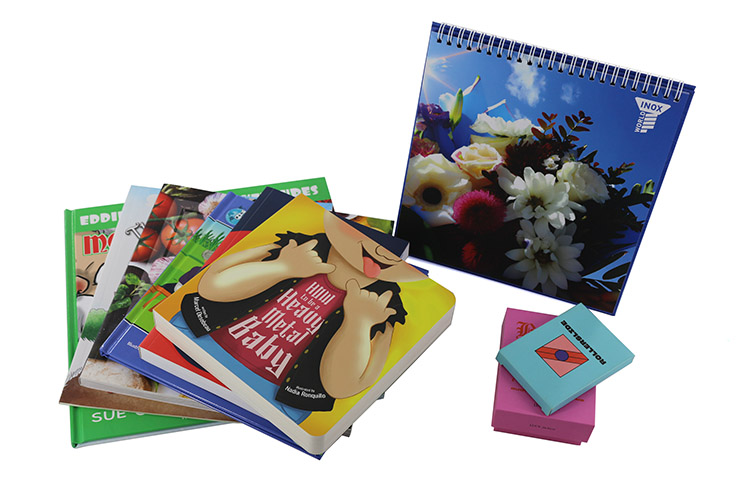US Standard Sizes for Printing Product
In the realm of printing, whether for personal projects or commercial purposes, understanding the standard sizes available in the United States is crucial. These standards help in ensuring consistency, optimizing costs, and enhancing the overall aesthetic appeal of the printed material.
From books and calendars to cards and puzzles, each product has its unique set of dimensions that cater to its specific use and audience. In this comprehensive guide, we explore standard U.S. print sizes for a variety of products and help you choose the best size for your project.
US Standard Size in Printing
The concept of standardization in printing sizes stems from the need to streamline production, facilitate ease of use, and ensure compatibility with printing hardware. The United States, like many countries, has adopted a range of standard sizes that cater to the diverse needs of the printing industry. These standard dimensions not only simplify the design process but also help in reducing waste and lowering costs for both printers and consumers.
Book Standard Printing Size
Typically, paperback and hardcover books have a specific range of printing sizes. If you are not sure which book size to print, you should choose the standard Letter or Digest size. Like other special types of books such as board book printing, usually smaller sizes like 6 x 6 inches, 7 x 7 inches, etc.
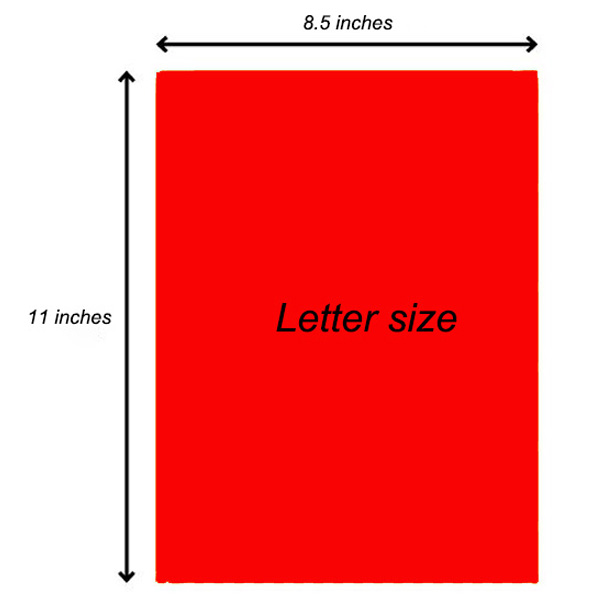 Letter
Letter
The letter size, measuring 8.5 x 11 inches or 11 x 8.5 inches, stands as one of the most commonly used paper sizes in the US. Its versatility makes it a preferred choice for a variety of printing needs, including documents, letters, and as a standard book size for printing. This size offers ample space for text and graphics, making it ideal for reports, manuals, and both fiction and non-fiction books.
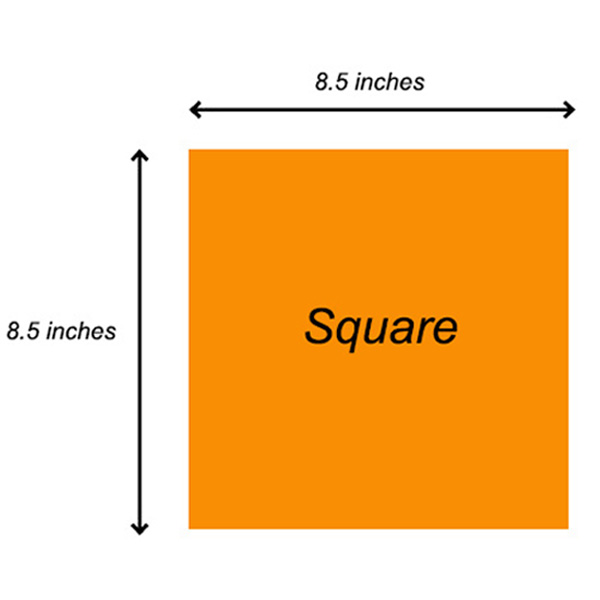 Square
Square
Square books, typically ranging from 8.5 x 8.5 inches to 12 x 12 inches, offer a unique visual appeal. This format is particularly favored for picture books, art books, and cookbooks, where the symmetry can enhance the layout and presentation of content. The equal dimensions provide a balanced canvas for showcasing illustrations, photographs, and recipes in a compelling manner.
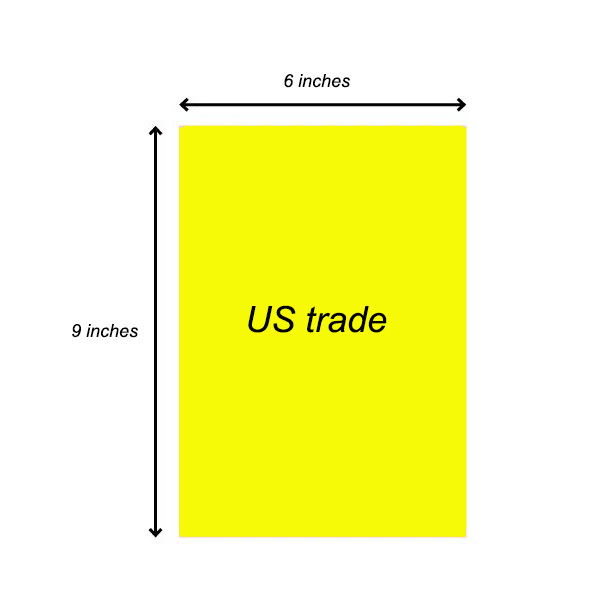 US trade
US trade
The US trade size, usually 6 x 9 inches, is a widely recognized standard book size for printing novels and non-fiction titles. Its popularity stems from the perfect balance it offers between readability and portability. Books in this size are easy to carry, fitting comfortably into bags and purses, while providing enough space for text to be laid out clearly.
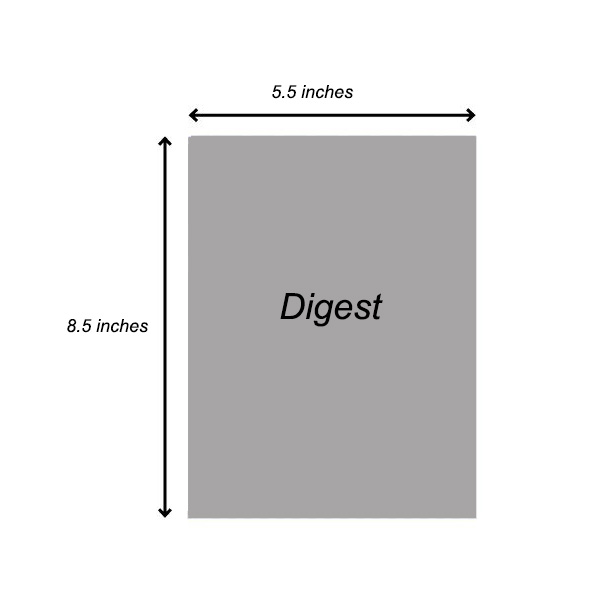 Digest
Digest
Digest size, at 5.5 x 8.5 inches, is another standard format, often used for magazines, booklets, and smaller paperback books. This size is particularly effective for publications that aim to be compact and easy to handle, without compromising on the amount of information they convey. It’s a common choice for guidebooks, instructional manuals, and periodicals.
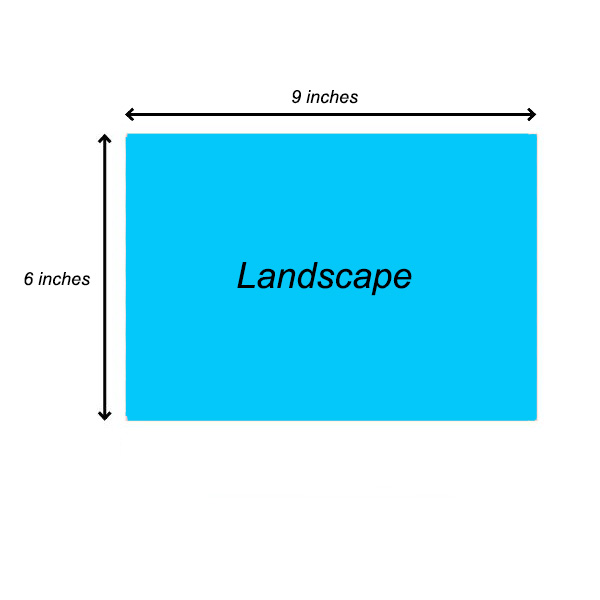 Landscape
Landscape
Landscape books, typically seen in dimensions like 9 x 6 inches, offer a broader canvas for showcasing panoramic photographs, artwork, and layouts that benefit from a wider aspect ratio. This format is especially popular for children's picture books, coffee table books, and high-end brochures.
Size can also be broken down into audience types and genres. Here are some of the most popualr size in US.
Hardcovers:
5.5 x 8.5 inches; 6 x 9 inches; 9 x 7 inches; 8 x 8 inches; 8.5 x 8.5 inches; 10 x 10 inches; 8 x 10 inches; 8.5 x 11 inches; 11 x 8.5 inches
Trade paperback:
Fictions: 5 x 8 inches, 5.5 x 8.5 inches 6 x 9 inches
Non-fictions: 5.5 x 8.5 inches, 6 x 9 inches, 7 x 10 inches
Mass market paperback:
Fiction and non-fiction: 4.25 x 6.87 inches
Novellas: 5 x 8 inches
Children's book: 7 x 10 inches, 5 x 7 inches, 8.5 x 11 inches, 11 x 8.5 inches, or 8.5 x 8.5 inches
Textbooks: 6 x 9 inches, 8.5 x 11 inches
Catalog Standard Printing Size
Catalogs serve as a critical marketing tool for businesses, showcasing products and services in an organized and visually appealing manner. Standard sizes for catalogs include 8.5 x 11 inches and 5.5 x 8.5 inches, catering to different levels of detail and portability. Larger sizes can accommodate extensive product ranges. But smaller formats are perfect for highlighting selected offerings or for mail distribution.
Booklet Standard Printing Size
Booklets, often used for promotional materials, event programs, and small catalogs. Typically follow sizes similar to books and catalogs (5.5 x 8.5 inches or 8.5 x 11 inches) but with fewer pages. The choice of size should reflect the booklet's purpose, audience, and distribution method, ensuring that it is both practical and engaging.
Magazine Standard Size
Magazines vary widely in size, but standard dimensions like 8.5 x 11 inches (for full-size) and 5.5 x 8.5 inches (for digest size) are prevalent. These sizes offer a balance between visual impact and ease of handling, making them suitable for a broad range of content, from in-depth articles to high-quality photography.
Flyer Standard Size
Flyers are a direct and efficient way to communicate with your audience, whether for promotional events, services, or informational purposes. Standard flyer sizes include 8.5 x 11 inches (letter size), 5.5 x 8.5 inches (half sheet), and 4.25 x 5.5 inches (quarter sheet), each serving different levels of detail and distribution needs.
Brochure Standard Size
Brochures are versatile tools for presenting information in a compact, easy-to-read format. The typical brochure size unfolds to 8.5 x 11 inches, allowing for a detailed presentation of services, products, or company information. Tri-fold and bi-fold are common layouts, offering a structured way to guide the reader through the content.
Poster Standard Size
When it comes to making a visual statement, the standard poster size for printing plays a crucial role. 11 x 17 inches for small posters, is the most commonly size for printing posters. 24 x 36 inches for large posters, often seen in advertising and public announcements. 18 x 24 inches for medium posters, suitable for informational and decorative purposes. The choice of size should consider visibility, space, and the message's impact.
Comic/Manga Standard Size
The standard comic book size in the US is typically 6.625 x 10.25 inches, catering to the traditional format seen in comic book stores and conventions. Manga, originally published in Japan, often adheres to smaller sizes like 5 x 7.5 inches when translated and printed for the US market, reflecting its distinct style and reader preferences.
Calendar Standard Size
Wall calendar
Wall calendars are indispensable tools for planning and organizing, found in homes and offices alike. The standard size for wall calendars varies, with 8.5 x 11 inches, 12 x 12 inches and 11 x 17 inches being among the most popular. These dimensions provide sufficient space for artwork or photos, as well as for the calendar grid itself, making them both functional and decorative.
Desk calendar
Desk calendars, designed to sit conveniently on a table or desk. Typically measure around 8.5 x 5.5 inches for desk calendar, offering a generous writing surface for notes and appointments.
Desk pad calendar
Desk pad calendars serve a dual purpose as a calendar and a protective writing pad. Their standard size, often 22 x 17 inches, ensures they cover a significant portion of a desk, providing ample space for monthly views along with areas for notes, reminders, and important dates. These calendars are a staple in many office settings, helping to keep schedules visible and organized.
Notebook/Notepad Standard Size
Notebook size
Notebooks come in a variety of sizes, but some of the most common include the large format (8.5 x 11 inches), which mirrors the letter size, and the more portable A5 size (5.8 x 8.3 inches). The choice between these sizes often depends on the intended use, whether for detailed note-taking, journaling, or sketching.
Notepad size
Notepads, typically smaller and more lightweight than notebooks, are designed for quick notes and lists. Standard notepad sizes include 5.5 x 8.5 inches and 4.25 x 5.5 inches, offering convenience and portability. These dimensions make notepads perfect for personal reminders, shopping lists, or messages, fitting easily into bags and pockets.
Card Standard Size
Playing card
Playing cards are a universal form of entertainment, with a standard size of 2.5 x 3.5 inches. This size is ideal for handling, shuffling, and dealing, making it a timeless choice for card games around the world. The dimensions have been optimized for ease of use, ensuring a comfortable grip for players of all ages.
Tarot card
Tarot cards, used for both games and divination, are typically larger than standard playing cards, measuring approximately 2.75 x 4.75 inches. This extra space allows for more intricate artwork and symbolism, which is crucial for the interpretive nature of tarot readings.
Flashcard
Flashcards are a versatile educational tool, commonly found in sizes ranging from 3 x 5 inches to 5 x 7 inches. These dimensions are chosen for their ease of handling and storage, as well as for providing sufficient space for text, numbers, or images. Flashcards are effective for a wide range of learning activities, from language acquisition to memorizing facts.
Business card
Business cards are a professional staple, encapsulating essential contact information in a compact format. The standard US business card size is 2 x 3.5 inches, a size that balances the need for readability with the convenience of fitting into wallets and cardholders. This size allows for a clean, uncluttered design, ensuring that key details are easily accessible.
Postcard
Postcards, a popular form of correspondence and souvenir, adhere to a standard size of 4 x 6 inches or 5 x 7 inches. These dimensions are suitable for mailing without an envelope, offering enough space for an image on one side and a message with the recipient's address on the other. Postcards serve as a tangible way to share experiences, greetings, and information.
Jigsaw Puzzle Standard Size
Children's jigsaw puzzle
Children's jigsaw puzzles vary widely in size and complexity, catering to different age groups and developmental stages. However, the common finished size for these puzzles include: 10 x 14 inches (48-50 pieces), and 10 x 14 inches (100 pieces), 16" x 20" (200-300 piece), providing a manageable challenge for young puzzlers. These sizes allow for large, easy-to-handle pieces and colorful, engaging imagery.
Adult jigsaw puzzle
Adult jigsaw puzzles, designed for more experienced puzzlers, often feature smaller, more numerous pieces. Includes 500pieces: 16" x 20" or 18" x 24", 1000pieces: 19.25" x 26.625" or 20" x 30". These sizes strike a balance between challenge and accessibility, making them popular choice among puzzle enthusiasts.
Envelope Standard Size
Envelopes come in a variety of sizes to accommodate different types of mail, from letters and cards to documents and photographs. The most common sizes include #10 (4.125 x 9.5 inches) for standard letters and invitations, and 5 x 7 inches for greeting cards and announcements. These sizes ensure that contents fit snugly, providing protection while in transit.
Understanding the standard sizes for printing products in the US is essential for anyone involved in the creation, production, or consumption of printed materials. Whether you are a designer, a publisher, a marketer, or simply someone planning a personal project, being aware of these standards can greatly influence the success of your endeavors. By choosing the appropriate size for your project, you can enhance its appeal, functionality, and overall impact.
At Chinaprinting4u, we provide a wide range of standard sizes and custom sizes for printing your project. If you are ready to print your product in professional standard, contact us to get custom quote today. The biggest help you save 30%-50% than you print at local printing house.

